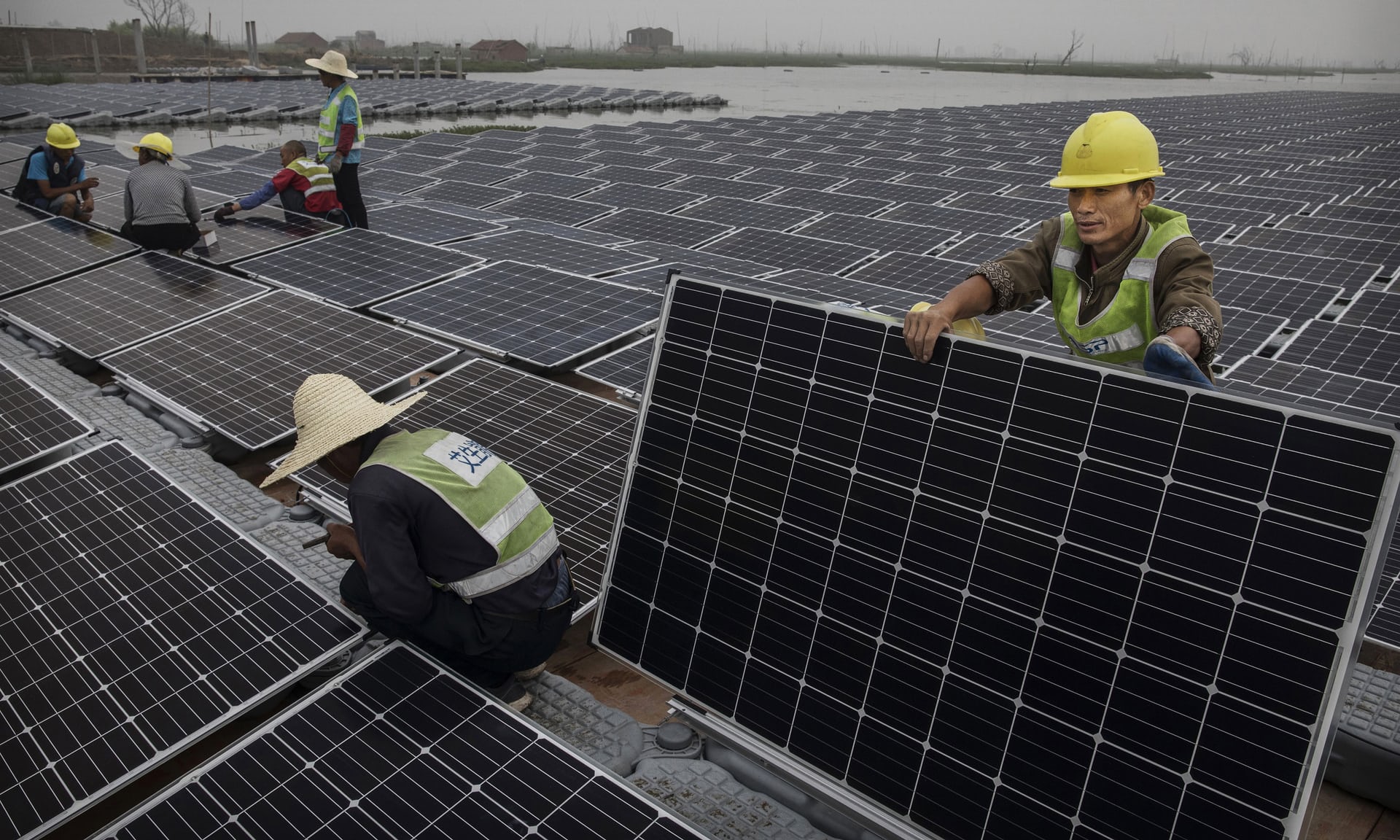IEEFA identified a record high spend of more than US$44bn by China on international takeovers and projects worth more than $1bn – a 38% year-on-year growth.
China’s One Belt One Road agenda, which drives infrastructure investment along ancient trade routes, is leading the country’s growth. $8bn of solar equipment has been exported from China since it began, and the country has overtaken the US and Germany to become the number one exporter of environmental goods and services.
“China’s presence in wind power globally is also on the rise, led by international activities of companies such as Goldwind and by China Three Gorges’ diversification away from hydroelectricity,” the report said.
The trajectory is in stark contrast to that of the US, which last year pulled out of the Paris climate accord and has renewed its support for the coal industry. The decision to abandon the Paris agreement “led to China’s quick reaffirmation of its emissions-reduction pledge”, the report said.
“That allows it to further project itself globally as a responsible major power while addressing its domestic air pollution concerns and building world-leading capacity in new energy markets.”
As part of its Paris commitments, China pledged to peak its emissions by 2030 while making best efforts to peak earlier. It would also increase the share of renewable or nuclear energy sources to 20%.
Co-author of the report and director of IEEFA, Tim Buckley, said China was setting itself up as a global technology leader “whilst the US government looks the other way”.
“Although China isn’t necessarily intending to fill the climate leadership void left by the US withdrawal from Paris, it will certainly be very comfortable providing technology leadership and financial capacity so as to dominate fast-growing sectors such as solar energy, electric vehicles and batteries.”
The report noted the August 2017 merger of China’s top coal mining company, Shenhua Group Corp, with one of the “big five” power utilities, China Guodian Corp.
The newly named China Energy Investment Corp created the world’s largest power generator, and with the clean-energy assets of Guodian, Shenhua’s growth was no longer dependent on the pursuit of coal.
“[This] strategic posture [of pursuing coal] has burdened China’s power companies and limited their appetite for innovative new clean energy technologies,” the IEEFA said.
The report also found China was “outmanoeuvring other economies” in securing energy commodity supplies such as lithium, nickel and cobalt, allowing them to dominate manufacturing of batteries and electric vehicles.
On Monday, the US federal energy regulatory commission rejected a plan by the Donald Trump-led US administration to provide subsidies for coal-fired and nuclear power plants.
Last year the energy secretary, Rick Perry, proposed moves to slow the phasing out of the ageing plants and Trump vowed to repeal Obama-era environmental regulations in a bid to end a so-called “war on coal”.
However, independent analysis found the subsidies plan would cost taxpayers $10.6bn a year, and the commission on Monday said there was no evidence that retiring coal-fired power plants threatened the reliability of the nation’s electricity grid.
